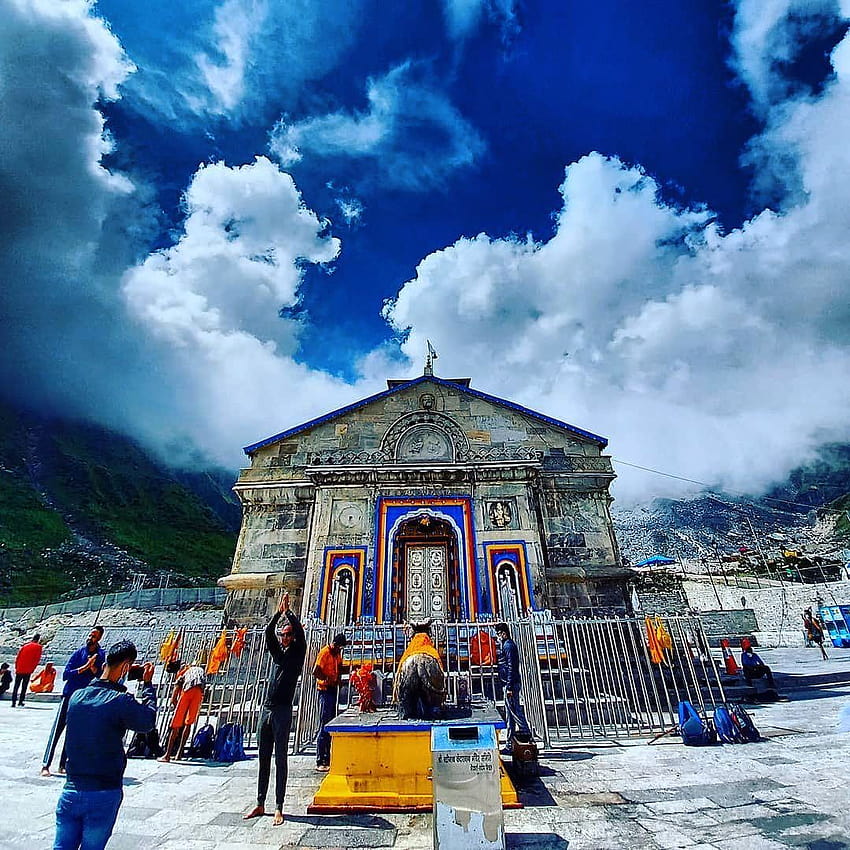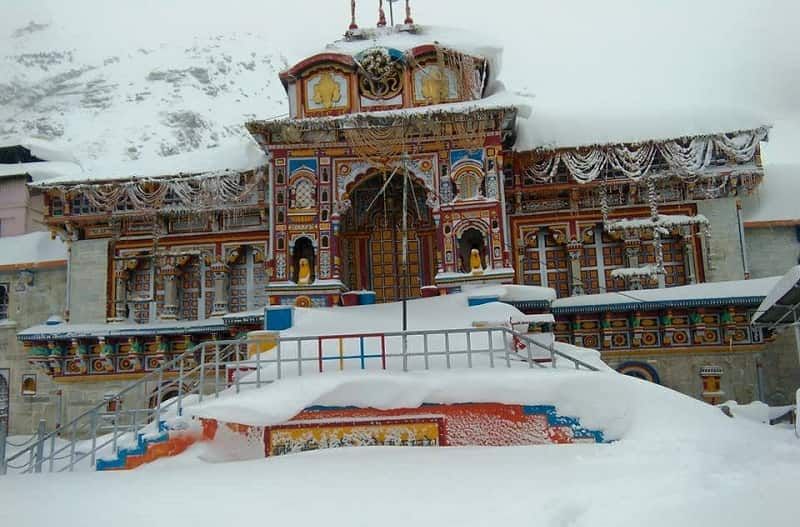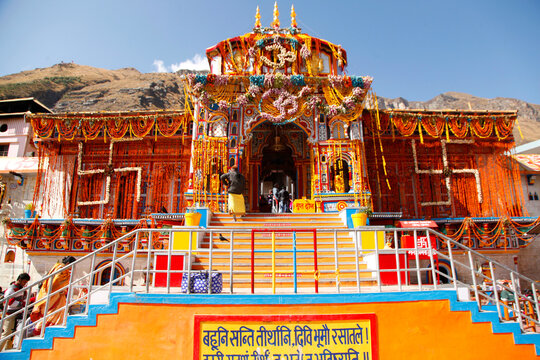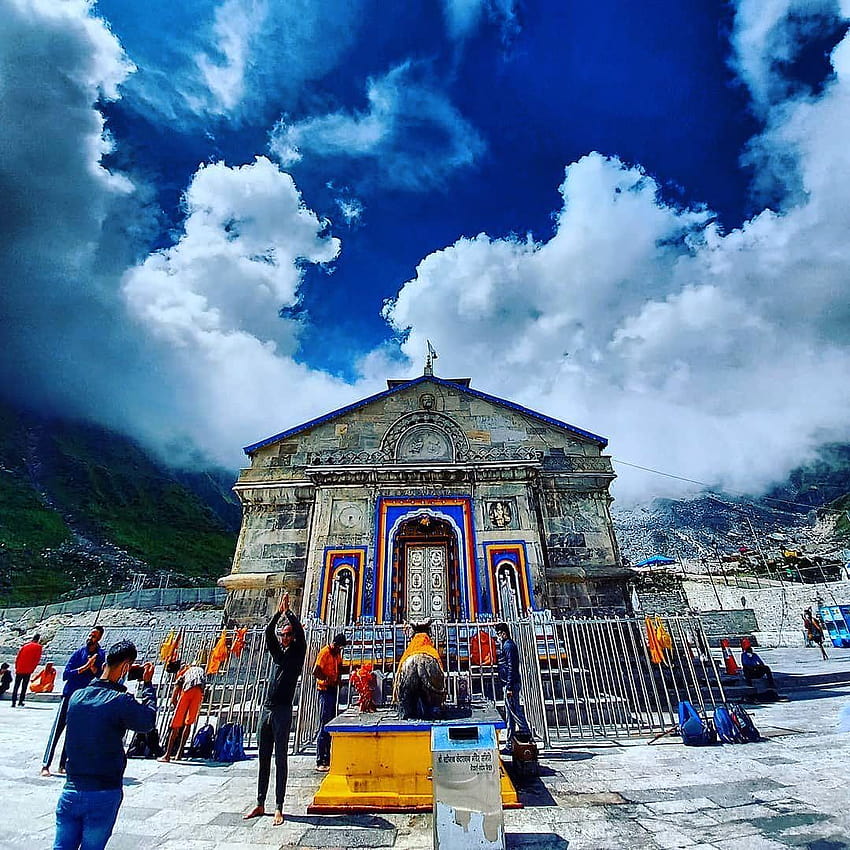Introduction
Nestled in the magnificent Himalayas, Badrinath is a sacred town in the Chamoli district of Uttarakhand, India. It attracts thousands of pilgrims and tourists each year, who seek solace in its spiritual ambiance and breathtaking natural beauty. However, exploring Badrinath requires a keen understanding of its weather patterns, as this region is known for its ever-changing and often unpredictable climate. In this article, we will delve into the secrets behind Badrinath’s weather, uncovering the factors that shape its unique climatic conditions.

Table of Contents
The Enigmatic Climate of Badrinath
Badrinath’s climate is characterized by extreme temperature variations and rapid weather changes. Summers can be pleasant, while winters can be harsh, with heavy snowfall and freezing temperatures. The region is also prone to sudden rain showers and occasional hailstorms. Such diverse weather conditions make it crucial for visitors to be prepared for any eventuality.
The Role of Altitude and Geography
Situated at an altitude of approximately 3,415 meters (11,204 feet), Badrinath’s weather is significantly influenced by its high elevation. Higher altitudes generally experience cooler temperatures, thinner air, and more intense sunlight. The rugged terrain and proximity to towering mountain ranges further contribute to the unique weather patterns observed in this region.
Seasonal Variations in Badrinath’s Weather

4.1 Summer
During the summer months (May to June), Badrinath experiences relatively pleasant weather, with temperatures ranging from 15°C to 30°C (59°F to 86°F). The days are usually warm and sunny, making it an ideal time for outdoor activities and religious ceremonies.
4.2 Monsoon
The monsoon season in Badrinath, which spans from July to September, brings heavy rainfall to the region. The mountains and valleys are shrouded in mist, creating a mystical atmosphere. However, it is essential to note that landslides and road closures are common during this period, making travel challenging.
4.3 Autumn
Autumn (October to November) is a beautiful time to visit Badrinath, as the weather becomes milder after the monsoon. The foliage of the surrounding forests takes on vibrant hues of red, orange, and gold, providing a picturesque backdrop for visitors.
4.4 Winter
Winter in Badrinath (December to February) is characterized by frigid temperatures and heavy snowfall. The mercury often drops below freezing, and the region is covered in a pristine white blanket of snow. Pilgrimage to Badrinath during this time requires careful planning and preparation due to the challenging weather conditions.
Factors Influencing Badrinath’s Weather

5.1 Jet Streams
Jet streams, high-altitude air currents, play a significant role in shaping Badrinath’s weather. These fast-flowing winds can cause sudden temperature changes and influence the movement of weather systems. The behavior of jet streams affects the intensity and duration of rainfall, as well as the overall atmospheric stability in the region.
5.2 Mountain Barriers
Badrinath’s weather is influenced by the nearby mountain barriers, including the Himalayas. These towering ranges act as natural barriers, obstructing the flow of air masses and causing them to rise, cool, and condense. As a result, precipitation is often concentrated in specific areas, leading to localized variations in weather conditions.
5.3 Local Weather Patterns
The intricate interplay between the geography, altitude, and prevailing wind patterns gives rise to local weather phenomena in Badrinath. These patterns can include the formation of convective clouds, thunderstorms, and localized winds. Understanding these micro-scale weather phenomena is crucial for accurate weather forecasting and ensuring the safety of visitors.
The Importance of Weather Monitoring in Badrinath
Given the dynamic and sometimes unpredictable nature of Badrinath’s weather, continuous weather monitoring is of paramount importance. The local authorities, along with meteorological agencies, employ a network of weather stations and satellite observations to gather real-time data on temperature, humidity, wind speed, and precipitation. This data enables them to issue timely weather advisories and warnings, ensuring the safety of residents and visitors.
Conclusion

Badrinath’s weather is an intriguing amalgamation of geographical factors, altitude, and atmospheric conditions. The region’s high elevation, coupled with its proximity to the Himalayas, contributes to its unique and often challenging climate. Visitors to Badrinath must be prepared for rapid weather changes and should take necessary precautions to ensure their safety. By unraveling the secrets behind Badrinath’s weather, we can better appreciate the awe-inspiring beauty and grandeur of this sacred destination.
FAQs
1. What is the best time to visit Badrinath?
The stylish time to visit Badrinath is during the summer months of May and June when the rainfall is affable, and the roads are accessible..
2. Are there any weather-related risks in Badrinath?
Yes, Badrinath is prone to landslides, heavy rainfall, and snowfall during certain seasons. It is essential to stay updated on weather conditions and follow the guidance of local authorities.
3. Can I visit Badrinath during the winter?
Visiting Badrinath during winter is challenging due to heavy snowfall and freezing temperatures. It is recommended to plan your visit accordingly and ensure you have proper winter gear and transportation arrangements.
4. How accurate are the weather forecasts for Badrinath?
Weather forecasts for Badrinath are reasonably accurate, thanks to advanced meteorological technologies and real-time data collection. However, due to the region’s dynamic weather patterns, it is always advisable to stay prepared for unexpected changes.
5. Are there any precautions to take while visiting Badrinath?
While visiting Badrinath, it is essential to carry warm clothing, rain gear, and sturdy footwear. Additionally, stay updated on weather conditions, heed the advice of local authorities, and respect the natural surroundings to ensure a safe and enjoyable experience.

